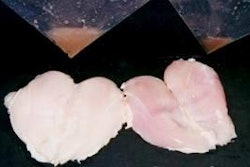Successful production runs in a poultry further processing facility begin with successful start-ups.
What does a successful start-up in further processing look like? Let’s face it – smooth start-ups are uncommon in far too many further processing facilities. More often it looks like a scene from a Keystone Cops movie, with everyone chasing their piece of the puzzle.
So how do you make it look like a ballet instead? Think of all the activities and materials that must come together to have a successful production run. The production area must be sanitized. The correct equipment must be set up in the correct order. The proper ingredients must make it to the line at the right time.
Starting with planning
The starting requirements don’t end there. The fryer or cooker must be assembled and heated up in time for start-up. Conveyors must be assembled and freezers clean and cold. Packaging scales must be calibrated. The correct bags, boxes and labels must be selected, and the correct pallet and stacking pattern must be specified.
Really, when you think about all the variables and potential for errors, it is a wonder plants ever get started at all. A successful start-up does not begin when people arrive at work. It begins days in advance, ideally weeks in advance. So what makes all this activity go right? Planning. Lots and lots of planning.
Breaking down production runs
Production scheduling is a matter of someone looking at current inventory levels, usage rates and lead times required for test results and then deciding what needs to be produced in a given week. The next step is breaking down those requirements into smaller time buckets of a full shift or maybe a production run of a specific product from start-up to the first break, or from break to lunch, etc. Sometimes the time buckets work out perfectly for the amount of product required, other times they do not.
So then, is it better to produce bigger batches or to change over mid-shift? We’ll come back to this later. Let’s assume for now you know what you have to produce, how much you have to produce and, after taking into account allergen and flavor requirements, in what order you have to produce it.
Required inputs
The next step in planning is determining all the required inputs: the right quantities of raw meat, ingredients, cooking oil, packaging material, pallets, etc. Are enough of those specific materials currently on hand or will more need to be ordered?
Most companies use MRP (Material Resource Planning) or ERP (Enterprise Resource Planning) systems loaded with Bills of Material (BOMs) which aggregate the requirements of all production runs for a given time frame based on the Bills of Materials. This is usually one of the first places where schedules go wrong.
It is critical for the bill of materials to be correct for every product as this is what orchestrates all the purchases of raw goods. Too many times a decimal point in the wrong place will lead to a further processing line standing idle while a search is conducted for an ingredient. So, a quarterly “scrub” of BOMs is recommended.
Setting up production runs
Now we have the plan and we have all the material, so how do we set up to run? This is where the best in class have the planning process down pat. The best way is for there to be a packet of information that describes the set-up, as well as all the volumes and staffing requirements for the production run. This is usually placed in a plastic sleeve and given to the supervisor. It should also include:
- Drawings of equipment setup. For instance is it duster>batter breader>duster or is it batter breader>duster>batter breader? Having a layout for the process makes it a very visual tool for the people who have to setup the equipment.
- Equipment specifications or settings. How many RPM should the drum breader rotate? What is the proper gap between belts? (The best way is to have them lock together at a set distance.) What RPMs should each conveyor be set? What is the proper viscosity of the batter? What temperature does the oven or fryer need to be set?
- For a well run setup, this packet should also include the time it takes to accomplish each step and the order in which each step must occur in order to start-up on time. Often times a small Gantt chart with the set-up steps listed down the left side and the time across the top will help a manager be able to know whether or not things are on schedule.
- Additional information needed includes staffing requirements, run rates (pounds per hour), QA specifications (ideally with photos of acceptable vs. downgraded product), lists of previous issues faced when running the particular product (i.e., voids, uneven temps, freezer jams, etc.) to alert the supervisor what to watch for when running the product.
Assembling the production line
Even after all this planning, one of the largest problems with start-ups comes down to simply finding all the parts to assemble the line. It is important to work closely with the sanitation department to require them to standardize locations for all the parts they clean. This is especially true of all the small stuff like gaskets, clamps and guards. They should have a specific place where they are either cleaned or placed after they are cleaned. The expectations should be that everything needed to start up the line is available. This means if sanitation washes a gasket down the drain while cleaning the area, they go get a replacement and place it where the gaskets are located, so it is available to the set-up people.
Batch size
So now that we have established how to have a proper start-up and a successful production run, let’s return to “batch size.” In an ideal world, one customer would take every pound you produce of a given production line. You could just set-up and run all day. This is rarely the case. So what is the correct batch size?
There are all kinds of formulas to decide economic order quantity (EOQ). This has been a topic of conversations since the beginning of the industrial age. The difference here is that if you decide wrong, product could sit in a freezer long past its expiration date and become virtually worthless.
Production runs
Which brings us back to the question, “So how much do you produce?”
In order to maximize your supply chain, you would produce product at exactly the same amount in which your customers are depleting the inventory. So if your customer uses 20,000 lbs this week, you should plan on only replacing the 20,000 lbs, even if that is far less than an “optimal” EOQ. This is usually counter to all that you have been taught regarding lowering the cost per pound, so it is usually never done. In order to be successful while running according to this principle, you must become very good at changeovers.
In a future article, we’ll address not only how to conduct a proper changeover, but also how conducting a proper changeover can improve cash flow. Good luck with your start-up ballet!





.jpg?auto=format%2Ccompress&fit=crop&h=167&q=70&w=250)











